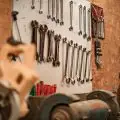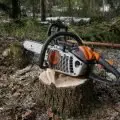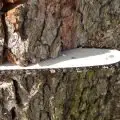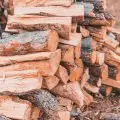We must treat chainsaws with the utmost respect. They are effective, but we must handle them with care to ensure the safety of the user and those in the area. You’ve come to the right place if you’re new to the cutting game and aren’t sure where to begin.
In this article, we provide all the necessary chainsaw tips for beginners you require to start using your first chainsaw effectively and safely.
Table of Contents
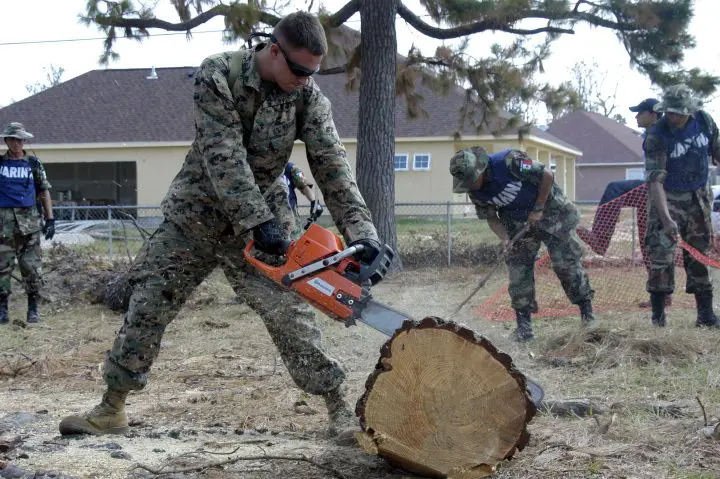
Chainsaw Tips for Beginners
Know Your Chainsaw’s Capabilities
It’s critical to understand your chainsaw’s limitations before beginning any wood-cutting project. The size of the tree you can cut will be constrained if you’ve chosen a smaller model, which will make it easier to handle. If you want to try and bring down big trees, you’ll need a bigger model with more power.
The length of the bar should also be taken into account in addition to the chainsaw model’s size. Shorter bars are utilized for branches, whereas longer bars are used to fell trees. Visit our What Size Chainsaw Do I Need? guide for help sizing your chainsaw.
Know Your Limits
If you don’t feel safe using the chainsaw you have in your hands, don’t use it. Make sure to get in touch with a professional for assistance if you feel that the task at hand is too much for you to handle.
Before You Get Started
The most crucial chainsaw advice for beginners proceeds with a safety checklist after you’ve determined the limitations of your chainsaw and the appropriate bar size for the job.
- Verify that the tension on your chainsaw chain is appropriate; neither too loose nor too tight.
- Verify that there are no missing or loose parts and bolts.
- Follow the manufacturer’s directions for the correct chain lubrication.
- Make sure the cutting edges and teeth are sharp.
- Wear the correct protective gear (more on this to follow).
- Scan your work area (more on this below).
Wear the Right Protective Gear
You must put on the correct safety equipment and protection gear before starting your project. You want to make sure that your body is protected against unintentional cuts because accidents can easily occur. Suitable personal protective equipment (PPE) includes:
- Safety glasses or goggles
- Ear protection
- Protective gloves
- Protective footwear
- Chainsaw chaps
Safety Goggles
As you begin to cut into the wood, safety goggles shield your eyes from any debris that may begin to fly around. Chainsaw dust and debris can get so fine that they can easily irritate your eyes. Watery eyes won’t help you chop wood effectively because you need to be able to clearly see what you’re doing.
Ear Protection
A chainsaw is typically LOUD to use. Even the most silent electric chainsaws produce some level of noise. You may risk permanently damaging your eardrums if you don’t use the proper hearing protection.
Protective Gloves
These gloves provide you with a firm grip on the chainsaw and provide additional security in case you experience chainsaw kickback. They keep your hands firmly on the chainsaw as you operate it to cut wood, preventing blistering.
Protective Footwear
When utilizing your chainsaw, your usual sneakers will not be adequate. To be able to stand and balance while controlling your chainsaw, you need shoes that give you a grip on the ground. In order to avoid having your toes accidentally severed in the event of an accident, steel-toed boots are advised.
The thick layer they create between your feet and the ground, which can be covered in jagged wood fragments, protects your ankles as well.
Chainsaw “Chaps”
Chainsaw chaps are a type of gear that you put on over your usual clothing to act as an additional layer of protection from the dust and debris that fly around when a chainsaw is in use.
Scanning Your Work Area
Make sure there are no obstacles or people in the way of your job before you start using the chainsaw. Make sure youngsters cannot access the area if you are working in your garden. Verify that nothing, such as tree branches and debris from a high tree, could fall on you while you are chopping.
How to Start Your Chainsaw
Placing your chainsaw on a flat place distant from any gas cans or open fires is the first step in starting it up. Make sure your chainsaw’s batteries are fully charged but avoid overcharging them as this might shorten their lifespan. Check the fuel level in your gas chainsaw, and whenever feasible, use eco-friendly fuels. Make sure that nothing is covering or laying on the cord if you’re using an electric chainsaw that has a cord.
Pull the choke out on the gas-powered chainsaw before starting it, especially in cold weather. Chainsaws powered by electricity and batteries are unaffected by cold weather. The chain brake should then be activated. Just advance the chain brake until you hear a click. As you start your chainsaw, this will prevent the chain from spinning in the event of a sudden kickback and keep you safe.
Pumping the primer is the next step. This clears the gas line of air. In order to drive gas into the carburetor, push it four or five times. After that, put your foot into the handle and hold the chainsaw firmly with your left hand. Take hold of the starter rope with your right hand and slowly pull it out until you encounter resistance.
Simply give the rope a quick, hard pull whenever you sense resistance. The rope may need to be pulled several times, but in between pulls, let it glide gently back into position. The starter mechanism may be harmed if the rope is allowed to snap back into the chainsaw.
Try pulling the choke back in halfway if your chainsaw still won’t start after a few pulls and you can hear the motor turning over. Then, after a few more tugs, it ought to start. Once the engine is started, briefly depress the throttle to maintain it. Setting the choke to idle might be necessary for some models. You can find more detailed starting instructions in your operating handbook.
Here is some crucial chainsaw safety advice regarding startups:
- Never try a drop start. This is an advanced approach that raises your risk of injury.
- Never wrap the starter rope around your hand; always hold it in your hand directly.
- If the bar of your chainsaw is jammed in wood, never attempt to start it. An enormous chance exists for a kickback.
- For any unique problems that might arise, always read the chainsaw’s safety instructions.
Making Your First Cuts
When you’re ready to start cutting, start by firmly grasping the machine in both hands. Keep the chainsaw close. To guarantee appropriate balance, place your feet firmly and at shoulder width. Be wary of little pieces that could become projectiles when cutting light material. Use extreme caution if you need to re-enter a cut on larger pieces of wood. At this point, kickbacks are possible.
Felling Trees
Make sure you follow all applicable local or state laws and regulations while felling (or cutting) a tree. Avoid cutting when there is bad weather, such as snow, rain, or strong winds. Plan out the direction in which you want the tree to fall. Before cutting, make the space clear. When choosing the direction, consider the wind.
A tree should never be cut at a height over your shoulders. Make sure you are adhering to safety procedures by doing your research on how to chop through larger trees safely. After finishing your job, make sure to maintain your chainsaw (advice on maintenance will follow), as a well-maintained tool will function better and is crucial for successfully and safely finishing your projects.
Visit our How to Cut Down a Tall Tree by Yourself article for a step-by-step guide.
Kickback Safety
Chainsaw kickback is a hazardous scenario that can affect anyone, including highly skilled individuals. A kickback occurs when the chainsaw’s guide bar rapidly turns back in your direction. It happens when the tip of the chainsaw chain nicks a hard object or the chain becomes caught between two pieces of wood.
You should take the appropriate steps as a novice to avoid a chainsaw kickback:
- Always use both hands to firmly grasp the chainsaw.
- Never cut with the blade’s tip.
- Before cutting, always test the chain brake (it could save your life or prevent a serious injury).
- Never cut through wood that has been used for construction since it can be hiding nails or other sharp items.
- Reentering a cut should be done carefully and with considerable caution.
Chainsaw Maintenance
For a chainsaw to last a long time, proper maintenance is necessary. Be sure to perform the following actions after each cutting session:
- Verify the tightness of all the parts and bolts.
- Refill the chain and bar oil.
- If the chainsaw needs fuel, drain the tank.
- The chain and bar should be cleaned and oiled.
- Remove the sawdust from the air filter.
- Before putting the chainsaw away, oil the chain.
Visit our Chainsaw Bar Upkeep and Maintenance to learn about dressing your chainsaw bar and more!
FAQs (Frequently Asked Questions)
What should you not do with a chainsaw?
Never use your chainsaw’s guide bar for digging or levering; it is only meant to be used to cut wood. Always match the chainsaw’s bar and blade size to the material being cut. Never try to cut down a large tree with a little chainsaw and bar.

